Embark on a cultural odyssey through the heart of Madhya Pradesh, where the illustrious Sanchi Stupa is just the beginning of a captivating expedition into India’s storied past. Our exploration takes us beyond the renowned Sanchi Stupa, revealing hidden gems that weave a narrative of ancient glory and architectural brilliance.
1. Sanchi Stupa: A Spiritual Odyssey
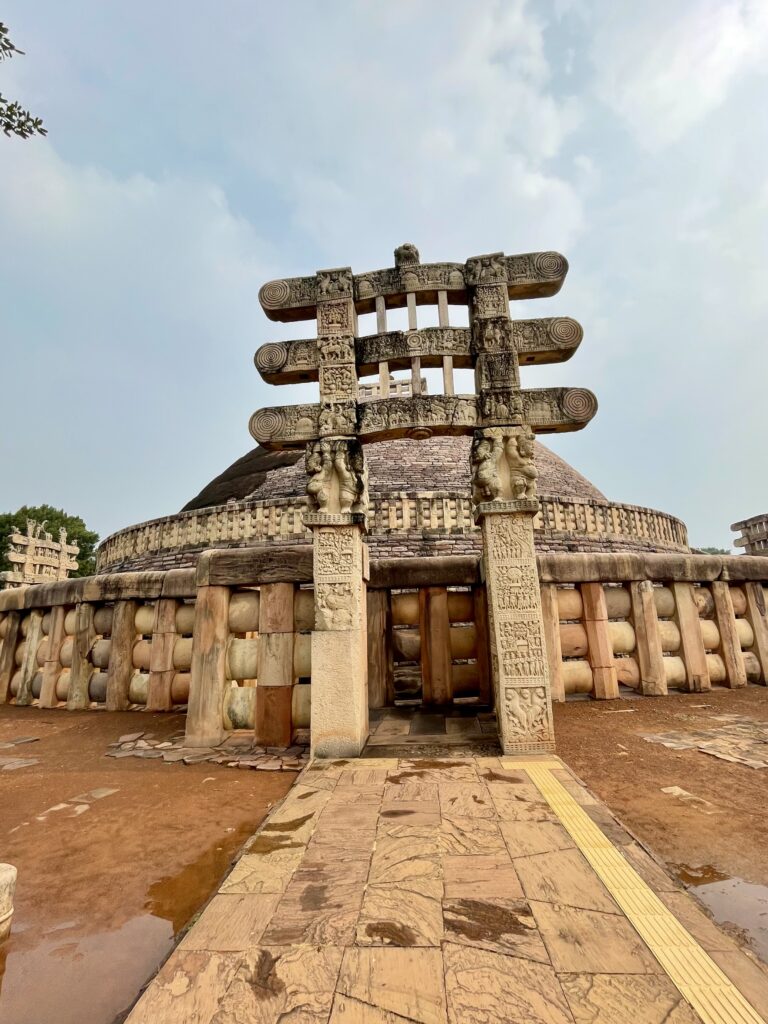
Our journey commences at the timeless Sanchi Stupa (46 km from Bhopal), a UNESCO World Heritage site echoing tales of the Mauryan Emperor Ashoka’s devotion to Buddhism. Marvel at the Great Stupa, adorned with intricate carvings and surrounded by four ornate gateways (toranas), as it stands as an epitome of ancient Indian architecture and spirituality.
2. Udayagiri Caves: Echoes of Jain Heritage
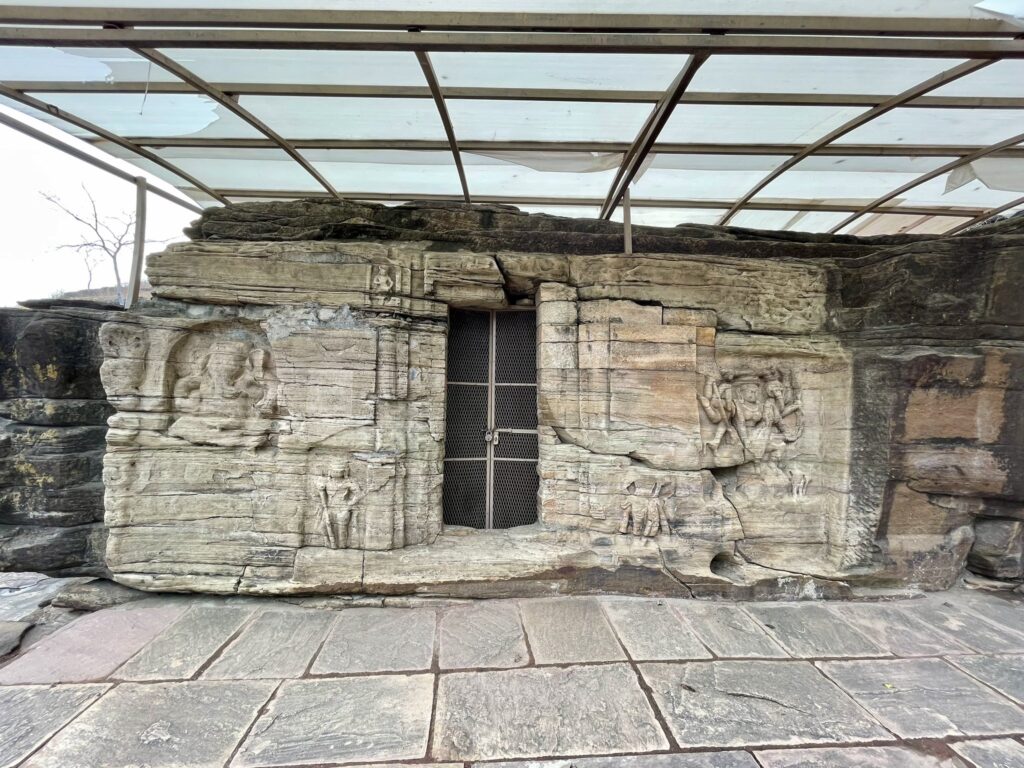
A 15 minute drive from Sanchi (10 km) leads to the Udayagiri Caves, where the Jain monks once found solace in rock-cut dwellings. These caves, dating back to the 5th century, offer a glimpse into the artistic and spiritual pursuits of ancient Jain ascetics, with numerous sculptures and inscriptions dotting the landscape.
Within Cave 5, a renowned relief captures the divine depiction of Vishnu assuming the Varaha avatar. This particular portrayal narrates the mythological tale of the demon Hiranyaksha concealing Bhudevi, the personification of Earth, within the ocean’s depths. Vishnu, in his Varaha form, emerges as the cosmic savior, rescuing Bhudevi from the clutches of darkness. The intricate detailing of the relief showcases the robust image of Varaha lifting Bhudevi gracefully upon his tusk. Noteworthy is the adornment of a substantial garland, known as a “vanamala”, encircling Varaha, accentuating the divine grandeur of this iconic depiction.
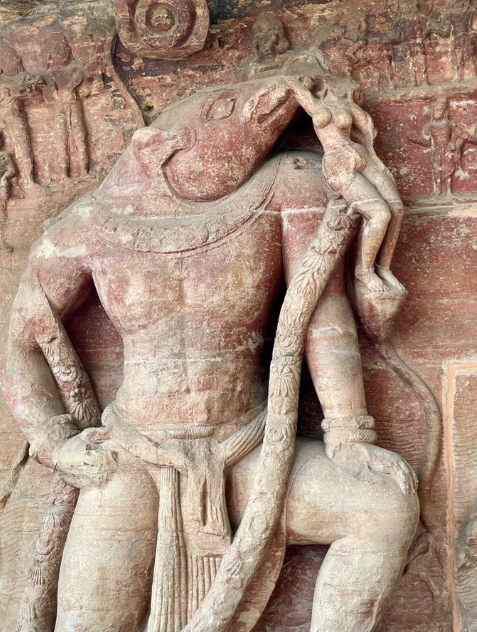
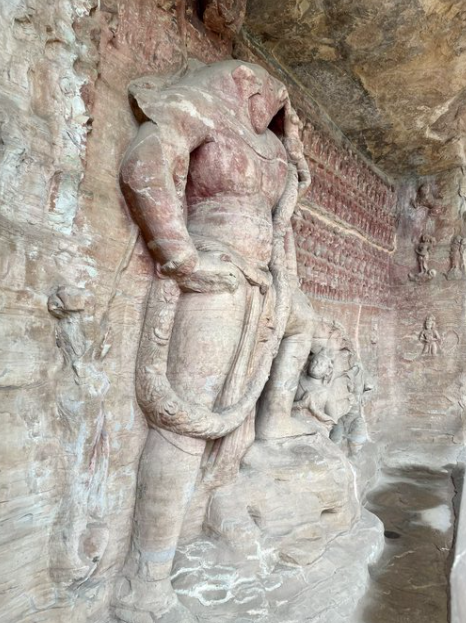
There are many deities and celestial beings around Varaha. On the left is Brahma sitting on a lotus and on the right is Shiva astride Nandi.
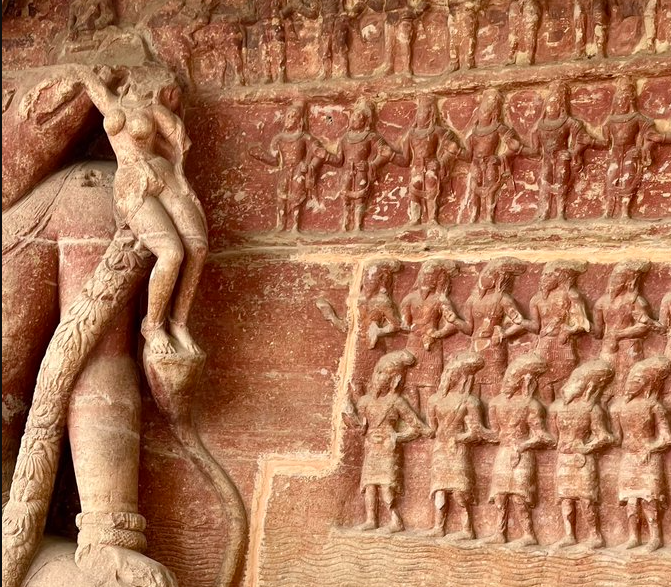
Notice the celestial beings and sages in this close-up image who praise and acknowledge Vishnu’s greatness.
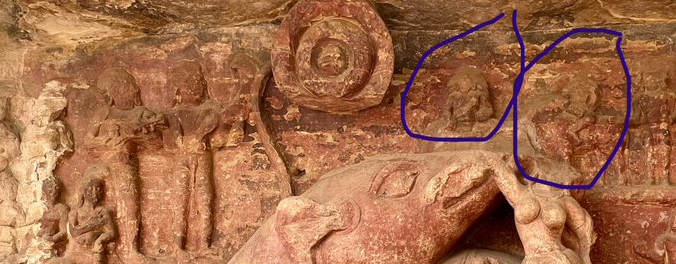
There are many deities and celestial beings around Varaha. I have highlighted two of these. On the left is Brahma sitting on a lotus and on the right is Shiva astride Nandi.
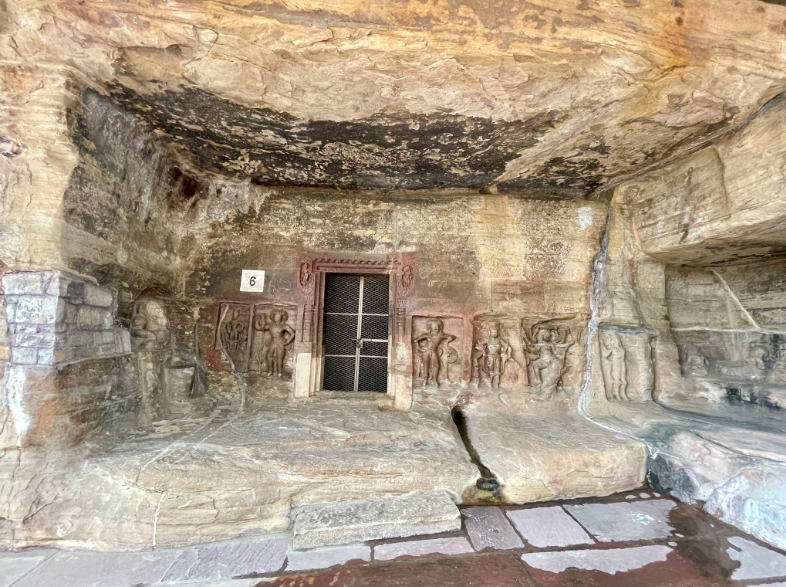
Cave 6 is interesting as there are more carvings at the entrance than in the garbha griha. The carvings have elements of Vaishnavism, Shaivism and Shakti. One of the earliest representations of Durga as Mahishasur Mardini can be found here.
3. Bhimbetka Rock Shelters: A Journey into Prehistory
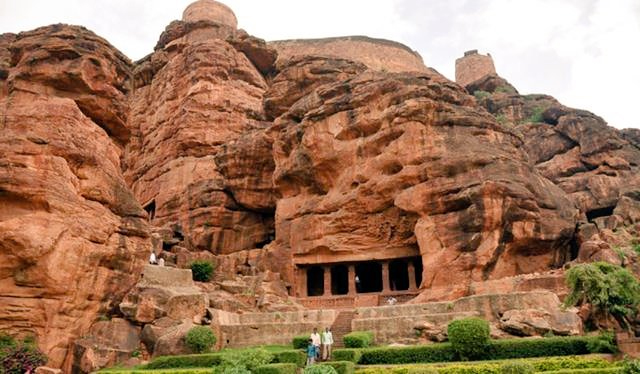
Venture further to Bhimbetka, 45 km northeast of Bhopal, an archaeological treasure trove renowned for its prehistoric rock shelters. These shelters, adorned with vibrant rock paintings dating back to the Paleolithic era, unveil the everyday life and rituals of early human civilizations in the Indian subcontinent.
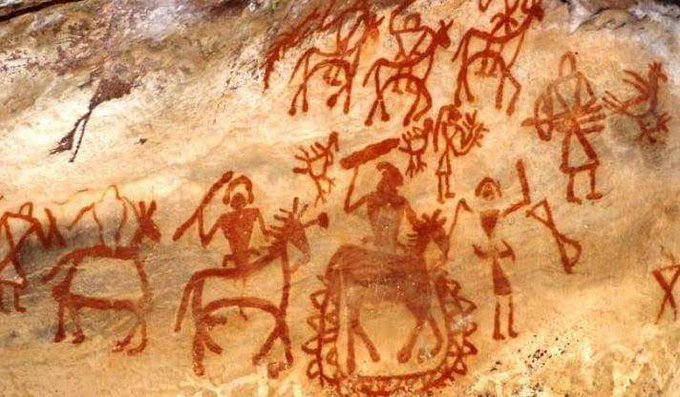
Bhimbetka Petroglyphs (100,000-10,000 years old); are the oldest known prehistoric art.
4. Bhojeshwar Temple: A Colossal Temple of Lord Shiva
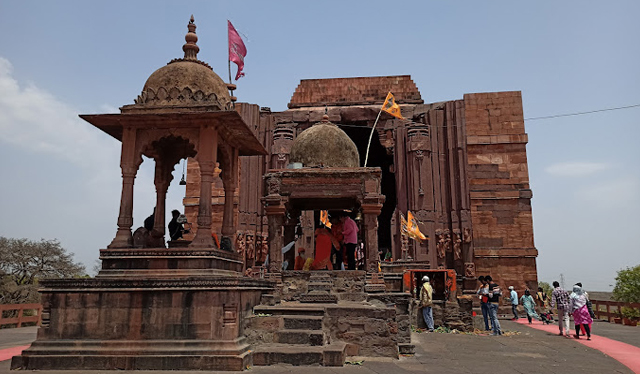
The next stop on our expedition is the Bhojeshwar Temple in Bhojpur village (27 km from Bhopal), a colossal testament to devotion carved out of a single rock. Dedicated to Lord Shiva, this unfinished marvel provides a unique perspective on ancient Indian temple architecture and the grandeur of the Parmara dynasty.
5. Gyaraspur: The Lost City of Temples
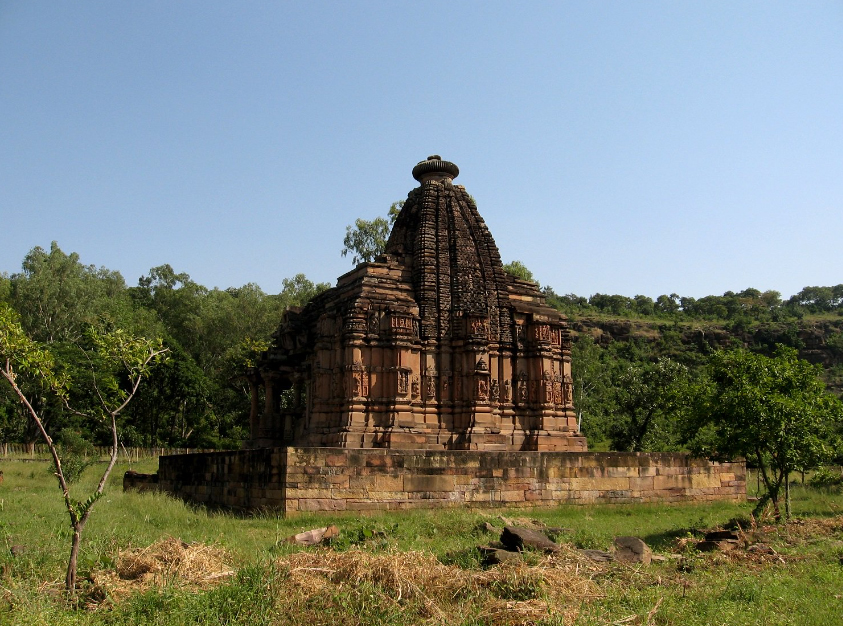
Bajramath temple, Gyaraspur, Vidisha – Pic: Arjun Kumar
Embark on a historical quest to Gyaraspur (on NH146 connecting Bhopal to Sagar). The place is named after gyaras, the eleventh day (Ekadashi) of the Hindu calendar month. The well-preserved temples of Gyaraspur, remnants of the Parmara dynasty, transport visitors to a bygone medieval era, where artistic brilliance and architectural splendor thrived.
6. Heliodorous Pillar: Unearthed Majesty Just 13 km from Sanchi
Unveil the hidden majesty of the Heliodorous Pillar, a lesser-known gem merely 13 km from Sanchi. Built during the Shunga dynasty’s reign (187 BCE to 73 BCE), this overlooked site stands as a testament to ancient craftsmanship. Originally part of the Pataliputra Shungas’ dominion, the later kings ruled from Besnagar (modern-day Vidisha, MP), adding another layer to the historical tapestry of the region.
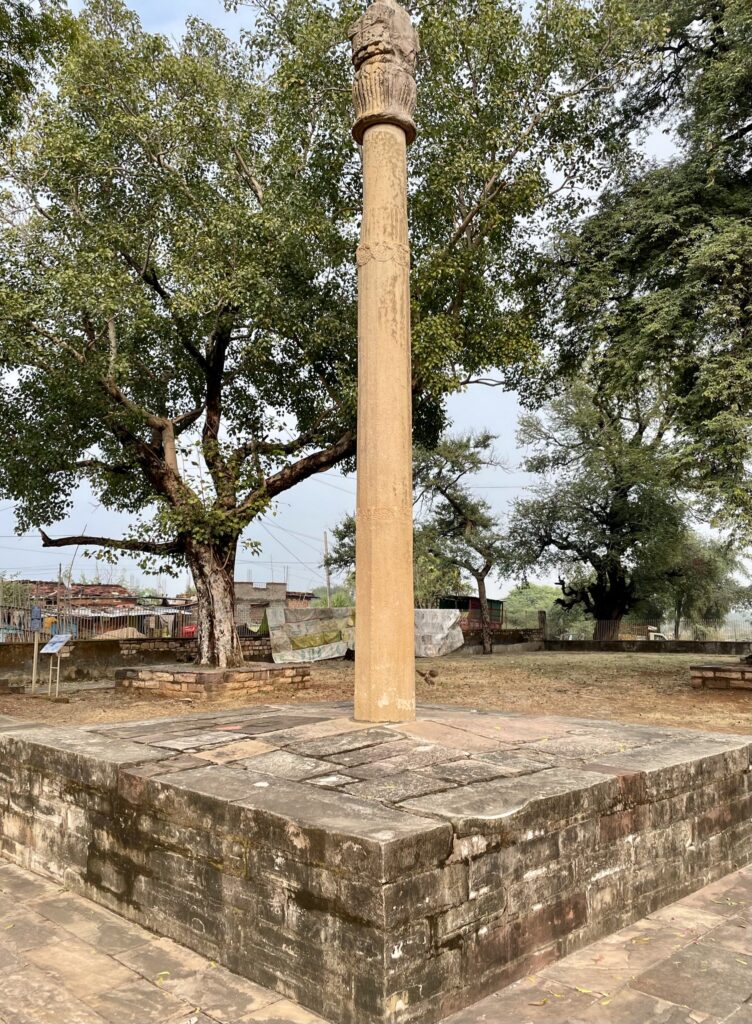
The pillar was installed by Heliodorous, a Greek ambassador to the Shunga court. In the inscriptions written in Brahmi script, he describes himself as Bhagavata, i.e. worshipper of the god Vasudeva Krishna. It is most likely Heliodorous had adopted Hinduism.
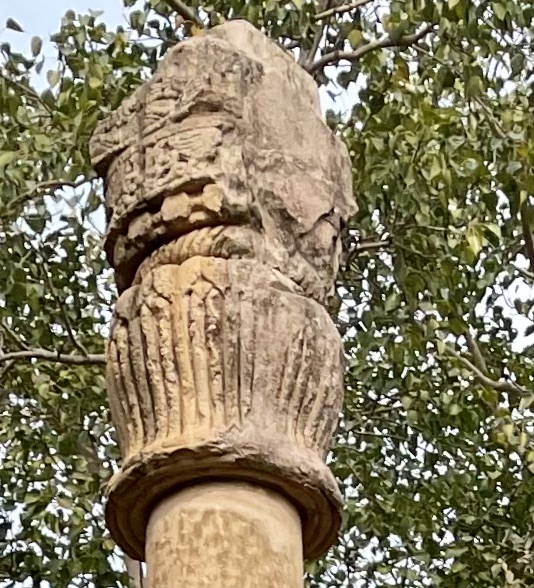
Close-up of the damaged remains of Garuda.
This is also called Garud Stambha, due to the Garuda atop the pillar. Garuda is the vahana or vehicle of Vishnu. The locals call it khamb baba (khamb = pillar).
The pillar lies in a village in dilapidated surroundings.
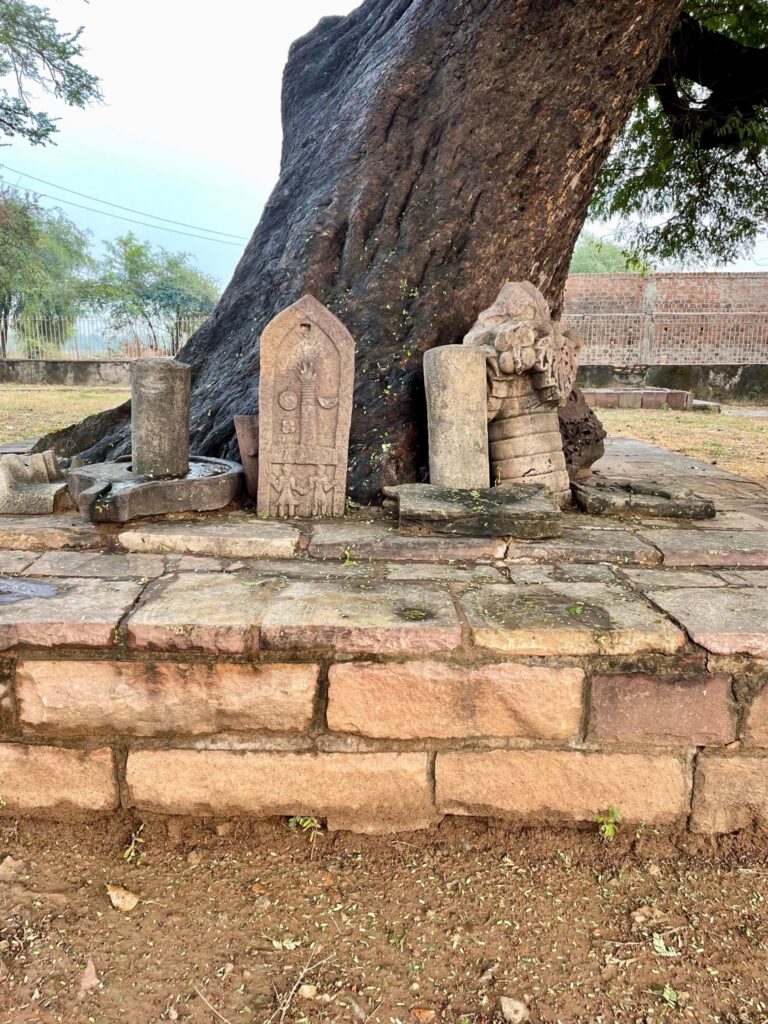
Some remains of a temple which existed nearby during the times can be seen reclining against trees.
As you traverse the landscapes surrounding Sanchi, from the spiritual tranquility of Sanchi Stupa to the historical significance of the Heliodorous Pillar, each monument unfolds a unique chapter of India’s cultural heritage. This journey goes beyond the ordinary, inviting you to discover the lesser-explored wonders that enrich the central Indian landscape with tales of ancient legacy and regal grandeur. So, set forth on a voyage through time, where each step beckons you closer to the fascinating narratives etched in stone and spirit.
Credits for details on Udayagiri caves and the carvings: Santosh Ojha
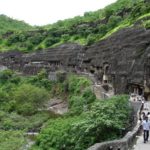


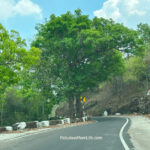
Leave a Reply